Rise of the machine: I just hiked the UK's highest mountain in Hypershell's new exoskeleton
Is Advnture writer Julia Clarke the first cyborg to successfully scale Ben Nevis?
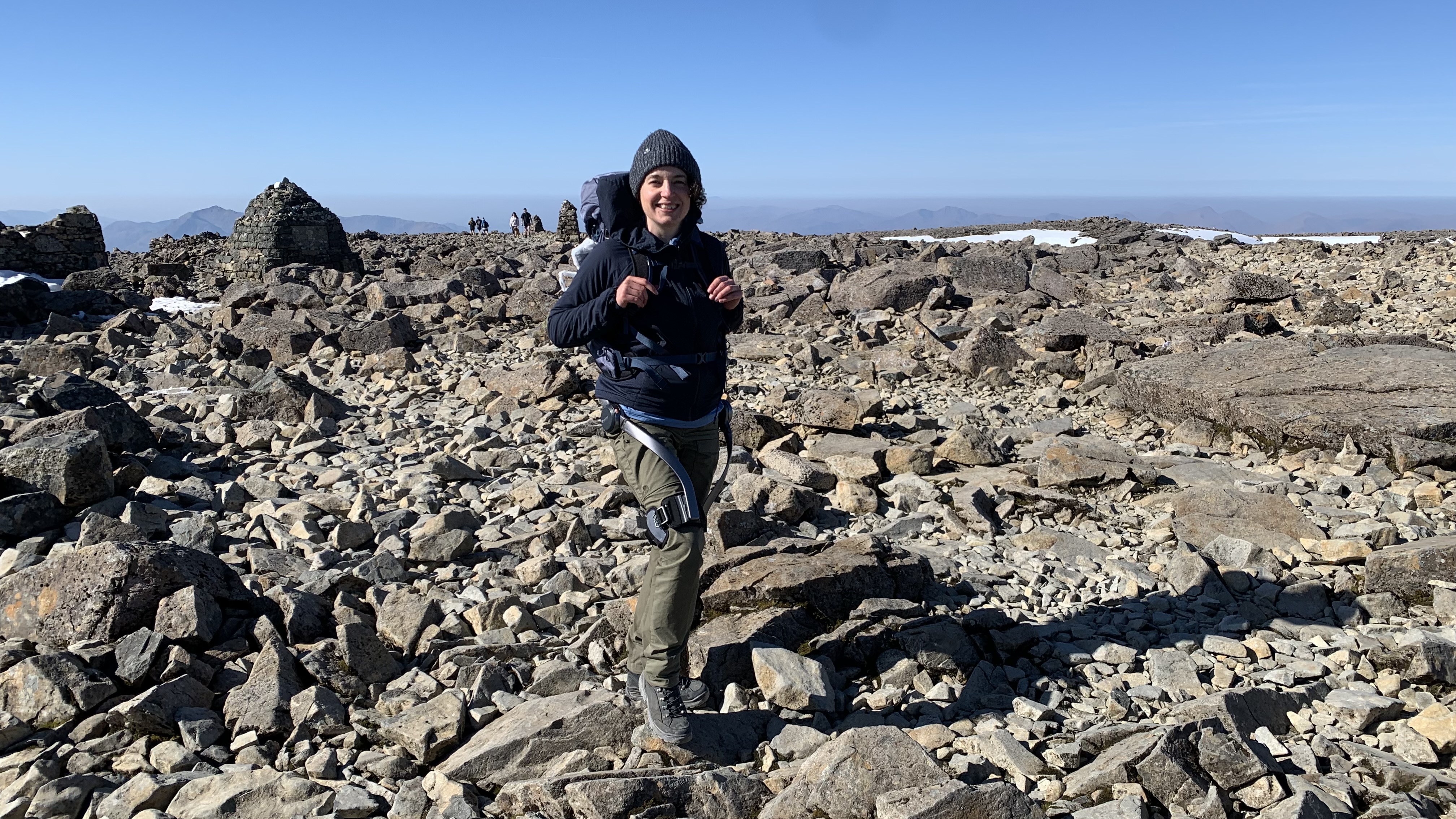
On Thursday morning, just after sunrise, I pulled into the car park at the foot of Ben Nevis. Only a handful of other hikers were there, preparing to hike the hulking peak, but with a day of endless blue skies ahead of us, I knew the peace wouldn’t last long. So I hurriedly jumped out, stretched, and pulled on my robotic legs.
I’ve got a perfectly adequate pair of human legs (well, they’ve been subject a new ACL and a few meniscus repairs, but what do you expect from a 43-year-old avid hiker?) but after I wrote an article about Hypershell’s new exoskeleton – a robotic leg brace powered by an AI-controlled engine that helps boost leg strength and reduce exertion – the Shanghai-based company got in touch to ask me if I’d like to test one out.
I quickly set my sights on Ben Nevis. As the highest mountain in the country, it’s still a decent hiking challenge for me, and I figured anyone considering an exoskeleton for hiking probably wants to accomplish something that feels hard but still plans to stick to a straightforward path. I was looking at over 10 miles (16km) with 4,414ft (1,352m) of elevation gain, pretty much identical in profile to Colorado’s highest peak, Mount Elbert. Not technical, but long and steep enough.
So as not to complicate matters with crampons and ice axes, I waited for the snow to melt to do my experiment (though I did carry my Nortec crampons just in case) and when a glorious spell of spring weather arrived, I charged both batteries that came with the Hypershell and laid my plans.
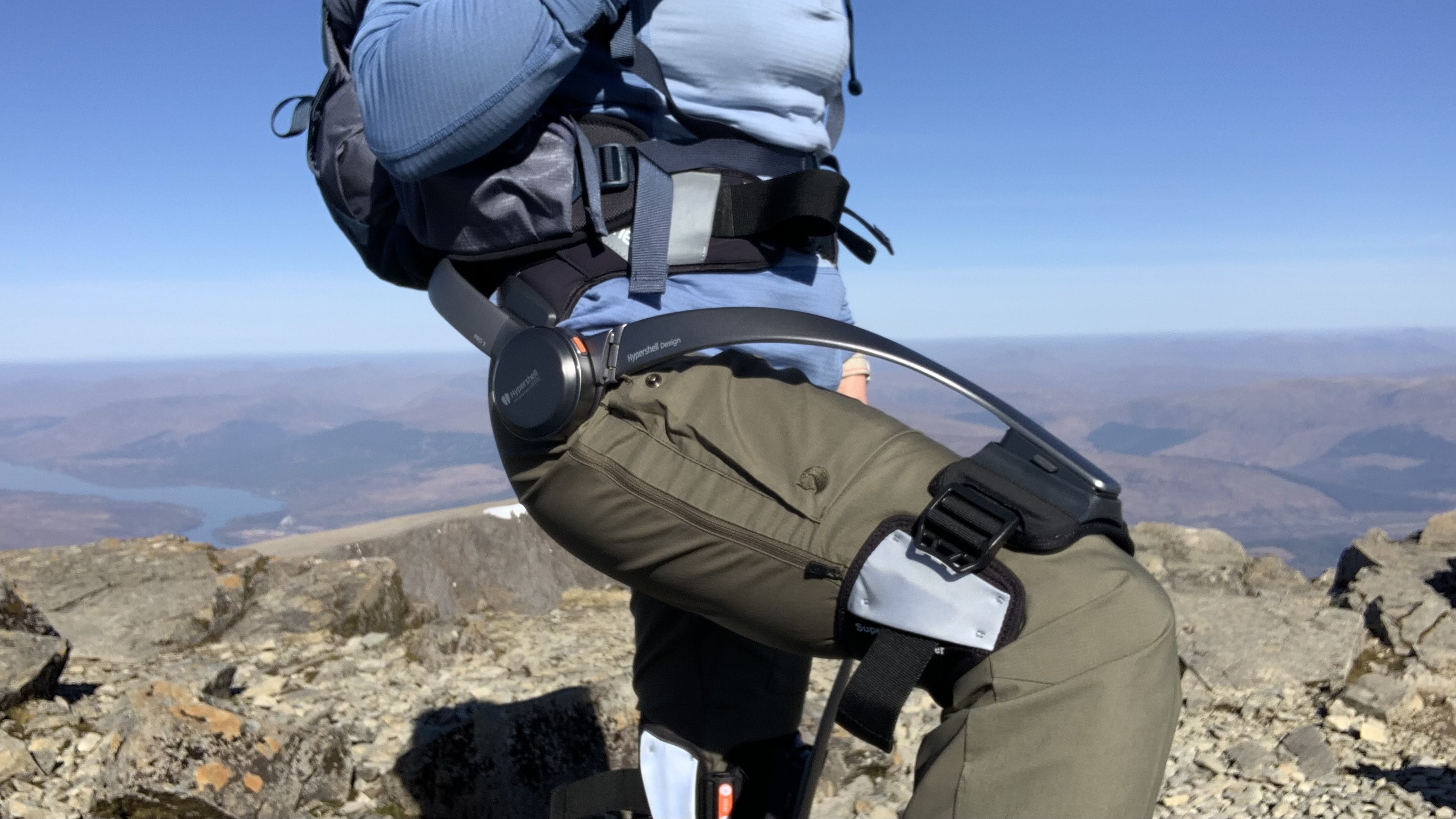
Getting the hang of it
To keep everything else as close to lab conditions as possible, I used my usual kit for the test: my Lowa Renegade Evo GTX Mid hiking boot for grip and support on the rocky path and my Leki Skytera FX Carbon SL trekking poles for balance. I wore my Fjällräven Abisko Hybrid Trail Trousers that are tough enough to stand up to some rubbing from the exoskeleton but light and stretchy enough not to bunch up underneath it, and I brought my roomy Osprey Tempest 33 backpack to ensure I'd have space to carry the exoskeleton if things didn’t go to plan.
I buckled my Hypershell around my waist and thighs just like I’d practiced the day before – it's well-padded, and it’s comfortable – hoisted my backpack off the ground, and instantly wondered if I had discovered the first flaw. Had they factored in wearing it with a backpack that also straps around your waist? Of course, they had. My pack sat on top of the waist belt of the exoskeleton, meaning there wasn’t any weight at all on my shoulders. Brilliant.
I turned the exoskeleton on by pressing the button on my right hip. The Hypershell app explains that there are three modes: moderate Eco and the more aggressive Hyper, indicated by green and red lights respectively, while blue LEDs meant I was in Transparent mode, which provides minimal assistance. In my eagerness to be transported effortlessly up the mountain, I went straight into Hyper, and my legs took off without me in predictable Wallace and Gromit fashion.
I fumbled around and, after a few moments, turned down the intensity to something better suited to the terrain and soon discovered that the exoskeleton does exactly what it says on the tin. Each time I started to step forward, it responded and lifted my knee higher than I usually would without my input. When I placed my foot down, it helped push my knee straight. The resulting stride felt a touch cartoonish, but I quickly started to get into the swing of cyborg hiking.
Advnture Newsletter
All the latest inspiration, tips and guides to help you plan your next Advnture!
Until I came upon a stile with a young hiker standing next to it and was instantly hit by uncharacteristic self-consciousness, magnified by the assumption the exoskeleton wasn’t designed to get people over stiles. Again, I was wrong – it’s been built to accommodate all types of movement associated with walking, including clambering, and my dignity remained intact as I gracefully climbed up and over and went on my way.
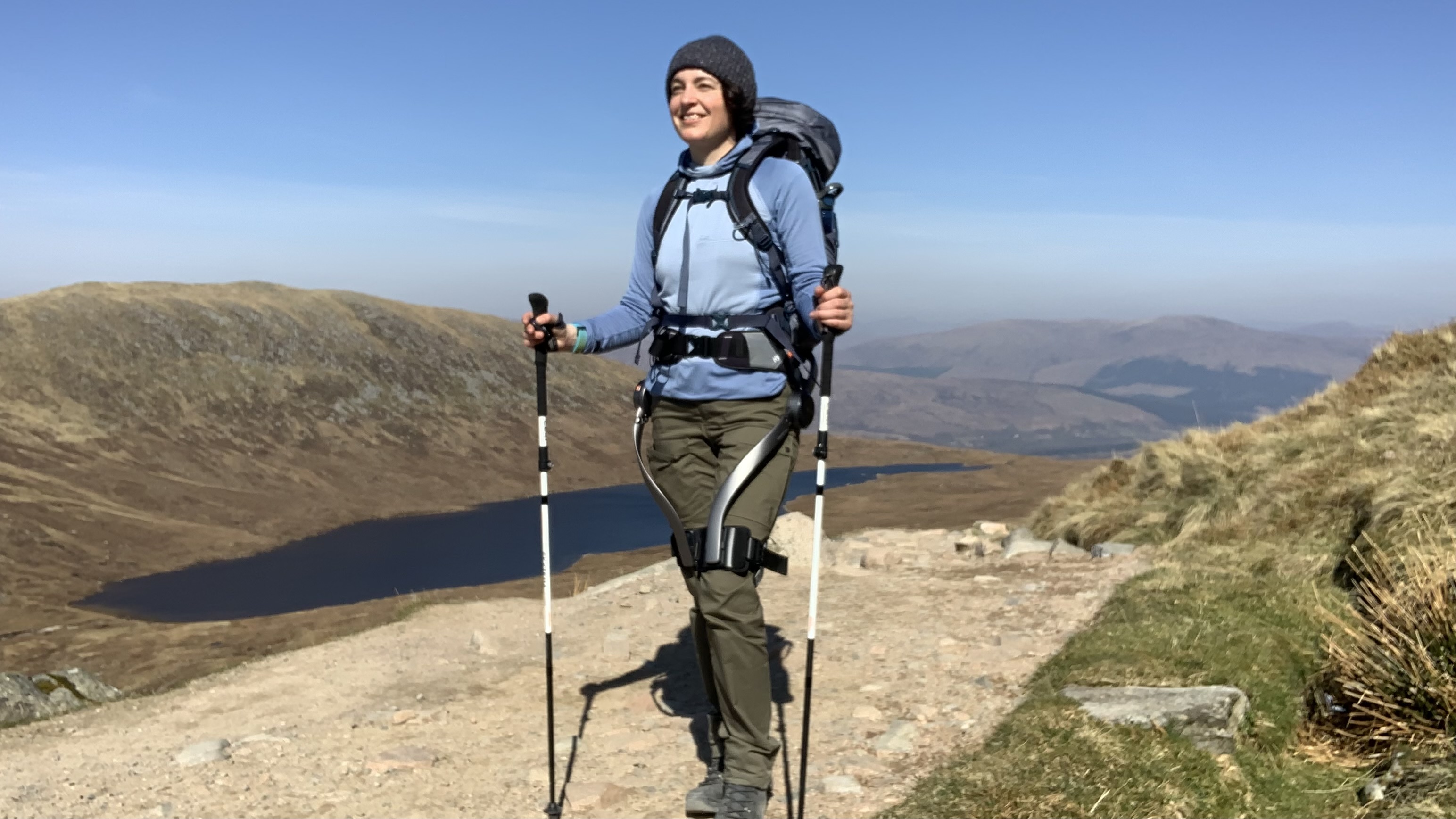
Range panic and a cyborg summit
Once I started climbing, the true merits of the Hypershell became clear. On an incline, the exaggerated knee lifting doesn’t feel quite so ridiculous, and I was able to keep up a fairly brisk pace even on the steepest slopes. Pace aside, I felt comfortable – I’d also taken the opportunity to test the Suunto Race S watch on one wrist and had my Coros Pace 3 on the other (also my Core heat sensor, this was a very high-tech hike), and the two assured me I was easily staying in zone 2. I didn’t feel breathless or hot, and as other hikers pulled off to de-layer and drink water, I strode on.
About a mile in, however, I was hit by a familiar sensation that I haven’t experienced since my days of renting electric cars from a UK car club. I realized that the four lights on the control panel weren’t telling me what power level I was on, as I had assumed. They indicated my battery level, and I was already down to 45 percent despite starting fully charged. Quickly, I was suffering from a full-blown range panic attack. Was I going to get stuck halfway up Ben Nevis and have to use my leg muscles to complete the mission? And carry an extra 4.4lbs of weight in my dead Hypershell? The horror.
Hiking on Hyper mode was a lot of fun, but if I was going to make it to the top in full droid mode, I was going to have to switch to a lower power level. I continued in Eco mode, which still lent me plenty of assistance but meant I felt like I was putting in some effort.
Three miles in, my battery ran out of juice, which became obvious when the motor, until now silent, started making an alarming grinding noise, and my legs suddenly felt like they’d been filled with concrete. I switched out my battery pack and carried on in a more conservative mode, and when I arrived at the summit, my parade of watches informed me it had taken me 2.5 hours to get there. Without help, I hike on the fast side, but on this trail, I’d usually be closer to three or 3.5 hours and certainly expect to feel more tired.
After soaking up the views and wolfing down a snack, the summit was starting to fill up, so I began my descent. Hypershell says its exoskeleton also provides downhill support, so I kept it on and while the sensation was a little more subtle, I could feel a real difference in the jarring impact of descending, something that my knees appreciated.
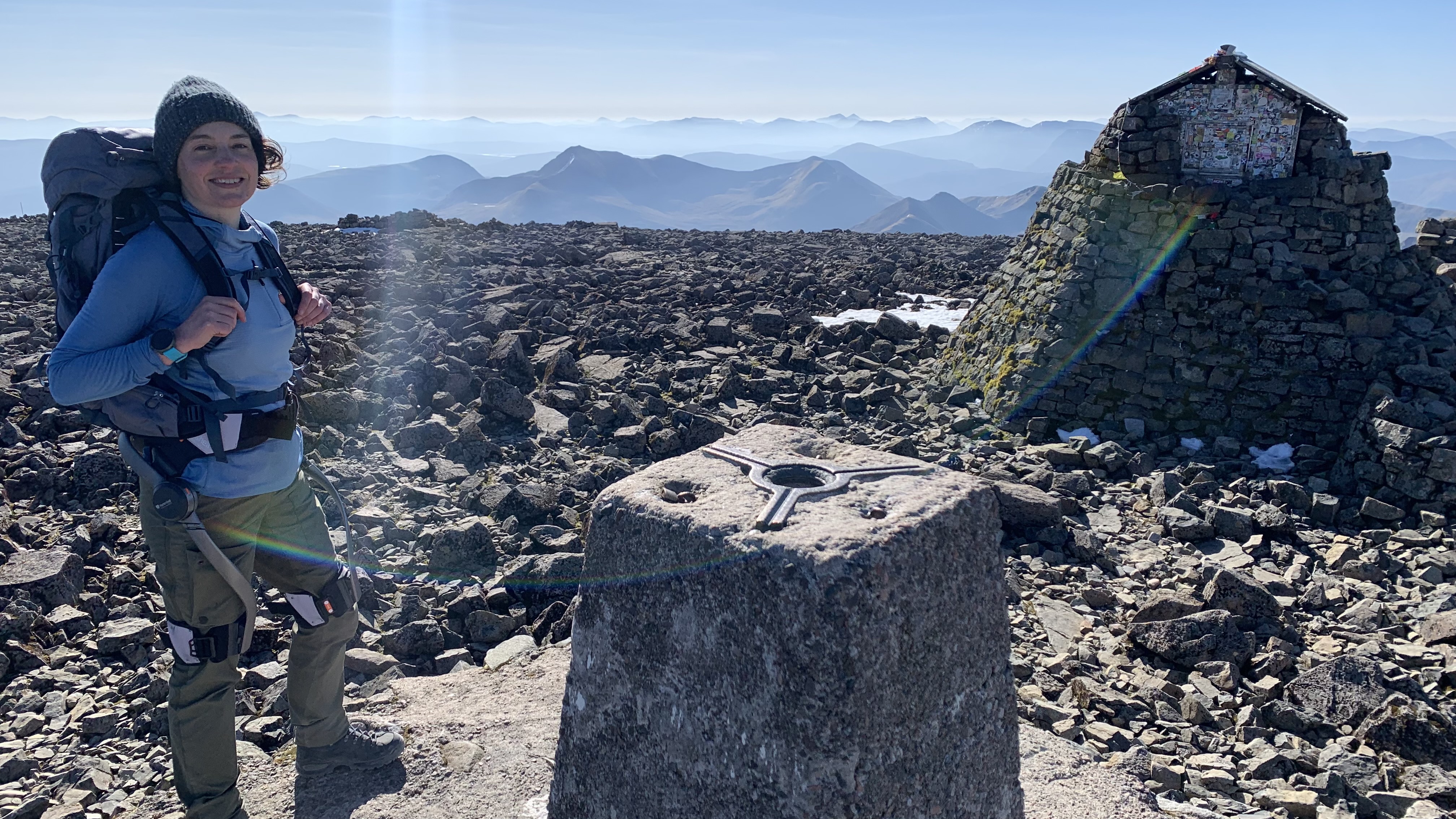
An e-bike for hikers
On my descent, with the sun high in the sky, a steady flow of sweaty hikers streamed past me on their way to the top. I must have encountered at least a hundred other people. Every single one glanced at my legs. Three dared to ask.
Of those three, two had read about exoskeletons and said they would consider using one. One accused me of cheating, but he couldn’t have been more than eight years old, and let’s face it, he was right. It occurred to me that most people perhaps assumed I was dealing with a disability, and I felt a bit guilty about the unintended deception, but that population is who I think can really benefit from this technology.
If you have mobility issues, an exoskeleton is a way that you can potentially see more of nature. I don’t know that I’d recommend going up Ben Nevis in it, unless you have extra batteries and are sure you can get yourself down if you run out of juice, but much like an e-bike, it might get you to a summit you haven’t seen in a while or help you keep up with more active friends.
And much like an e-bike, I think there’s a real case for making exoskeletons available for rental. Exoskeletons might remove some of the physical barriers to hiking, but they impose a fairly substantial financial one; currently, a Hypershell starts at $800 (£600) and the MO/GO, which is built into a pair of Arc’teryx Gamma hiking pants, will set you back $4,500.
Just like you can rent crampons from Ellis Brigham in Fort William to climb Ben Nevis or an e-bike at REI in Colorado, why not take an exoskeleton out for a day? A program like this was recently trialed in China, and hundreds of people showed up to try exoskeletons out on Mount Tai.
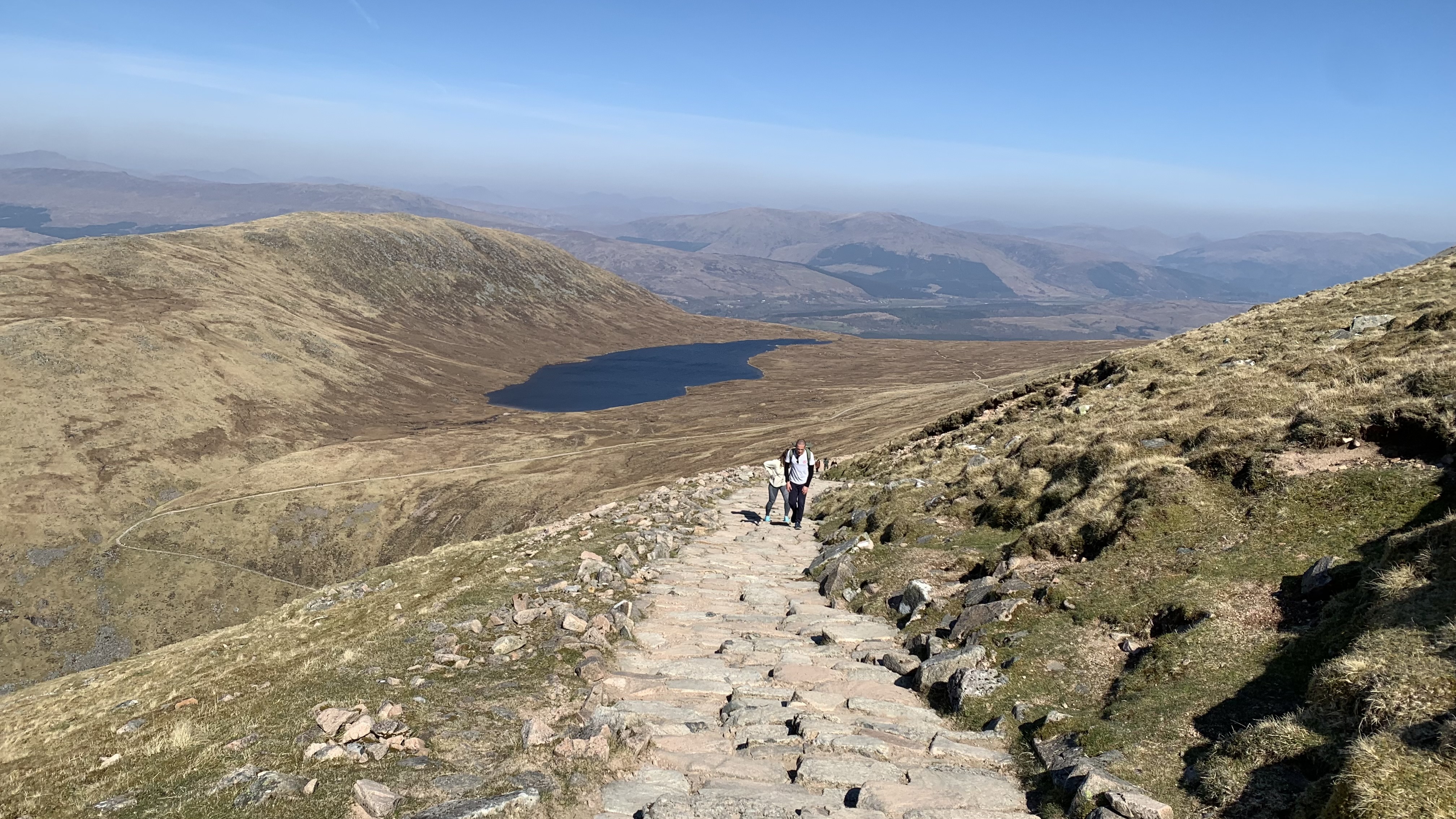
A technical issue?
Another potential issue I found with the Hypershell is that it’s probably too techy for a portion of its intended audience – my 73-year-old mother is on the waiting list for two new hips and would love to use it, but getting her to download the app and learn how to switch between the settings would be harder than carrying her up Ben Nevis myself. Then again, that’s a solution that could be solved with the addition of a simple on/off button and more directions printed on the exoskeleton.
But for those who don’t mind a little tech, an exoskeleton could cut down on time, effort and delayed onset muscle soreness – I started to tire a little towards the end of my hike, but the following day my quads, feet and ankles barely feel like they did anything.
I was convinced by the merits of the Hypershell, but as the sun beat down on me near the end of my adventure, my thighs a little sweaty under the braces, I’ll admit I started to crave the moment I could rid myself of all this tech. My second battery held out until just before I reached the car, and though I might have set a record as the first robot to hike Ben Nevis, I couldn’t wait to finally take it off and restore my mere mortal status once more.
I drove straight to my favorite waterfall, donned my water shoes and dove in for an icy cold dip – one of the main benefits of not actually being RoboCop.
Julia Clarke is a staff writer for Advnture.com and the author of the book Restorative Yoga for Beginners. She loves to explore mountains on foot, bike, skis and belay and then recover on the the yoga mat. Julia graduated with a degree in journalism in 2004 and spent eight years working as a radio presenter in Kansas City, Vermont, Boston and New York City before discovering the joys of the Rocky Mountains. She then detoured west to Colorado and enjoyed 11 years teaching yoga in Vail before returning to her hometown of Glasgow, Scotland in 2020 to focus on family and writing.

